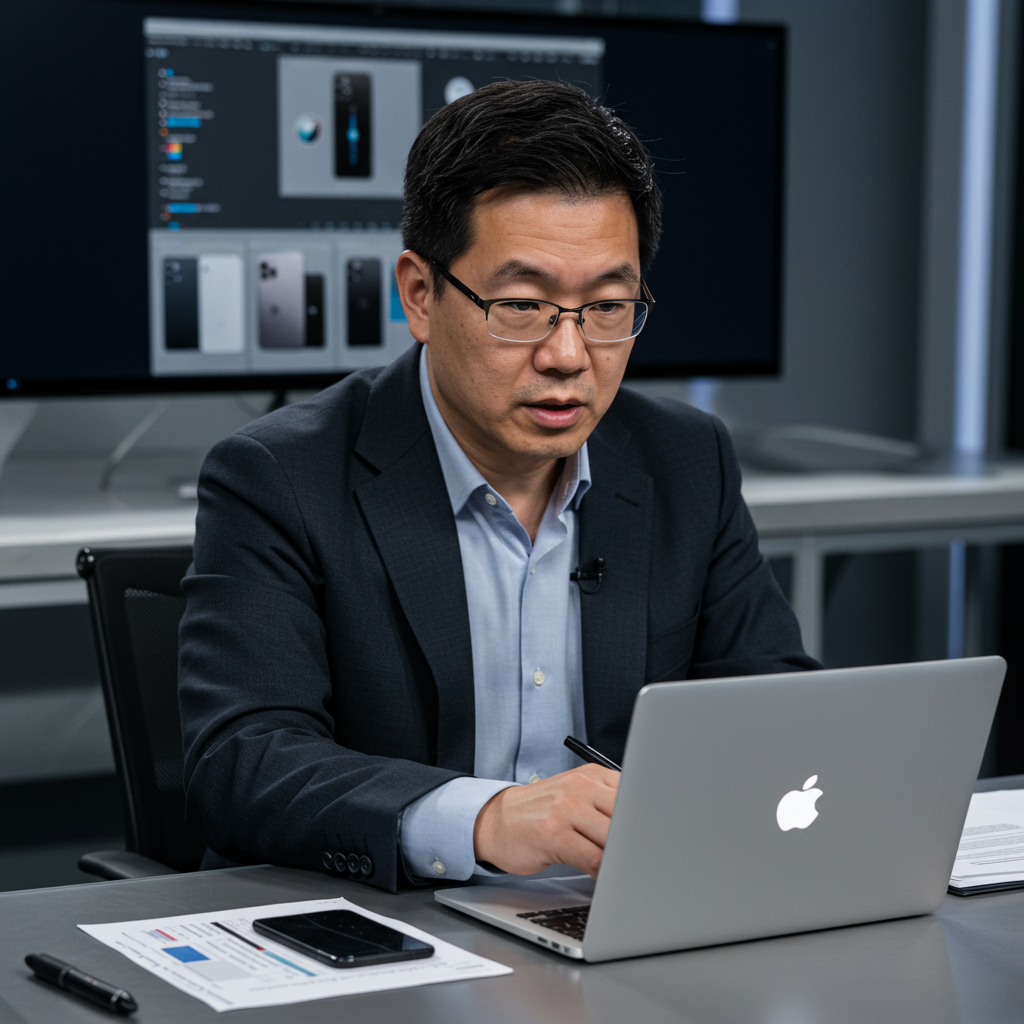apple enthusiasts and tech watchers eagerly anticipate the future, and this week delivered a fresh wave of intriguing rumors hinting at the company’s upcoming hardware lineup. From a potentially groundbreaking low-cost MacBook to advancements in spatial computing and updates for the iphone and iPad, whispers from supply chains and analysts offer a glimpse into Apple’s strategic direction.
These insights, brought to light by respected figures like Ming-Chi Kuo and others, paint a picture of innovation tempered by strategic product positioning. Let’s unpack the most significant Apple rumors circulating this week and explore what they could mean for consumers and the broader tech landscape.
Shockwave Rumor: MacBook Powered by iPhone Silicon
Perhaps the most unexpected and significant rumor centers around a potential new MacBook model that could fundamentally change Apple’s laptop strategy. Reports suggest Apple is preparing a highly affordable 13-inch notebook powered not by an M-series chip, but by silicon typically found in its flagship iPhones.
The A18 Pro MacBook Explained
Prominent analyst Ming-Chi Kuo is a key source for this rumor, indicating Apple is developing a 13-inch MacBook leveraging the A18 Pro chip. This is the same powerful processor expected to debut in the upcoming iPhone lineup. Internal backend code discovered by MacRumors appears to corroborate this possibility.
This new device is expected to be simply named ‘MacBook,’ positioned as a low-cost alternative to the MacBook Air. Pricing estimates place it in an incredibly accessible $699-$799 range. Such pricing would create a significant entry point into the Mac ecosystem. The target launch timeframe is late 2025 or early 2026. Adding a touch of fun, this rumored MacBook could arrive in vibrant color options, including blue, pink, yellow, and silver.
Tests suggest the A18 Pro chip’s performance is roughly comparable to the M1 chip from the 2020 MacBook Air. This performance level would be perfectly adequate for everyday tasks, web browsing, and productivity, aligning with a budget-friendly positioning.
Why an iPhone Chip in a MacBook?
Leveraging the A18 Pro chip offers Apple several strategic advantages. Primarily, it allows for significant cost reduction by utilizing high-volume mobile silicon. This helps create a distinct, lower-tier entry point positioned below the current MacBook Air models. Apple appears to be applying its successful “iPad playbook” here. Introducing a low-cost entry model should drive wider Mac adoption. This strategy particularly targets current iPhone users, mirroring the trend where a significant number of iPhone owners also purchase an iPad. Apple clearly hopes to replicate this success and expand the Mac user base.
Apple’s Ambitious Vision: Headsets, Glasses, and Beyond
Apple’s commitment to spatial computing remains strong, despite the Vision Pro’s high price and limited availability. A newly leaked roadmap provides a clearer picture of how Apple intends to evolve its head-mounted devices over the next few years. Analyst Ming-Chi Kuo also reportedly shared details from this pipeline.
Unpacking the Vision Product Roadmap
According to the rumored roadmap, the immediate future involves an M5 version of the Vision Pro later this year. This update is expected to offer primarily a spec bump rather than major design changes. Looking further out, 2027 could see the introduction of a lighter, more affordable model potentially called ‘Vision Air.’ The Vision Pro 2, promising substantial weight reductions, is reportedly slated for 2028.
Intriguingly, the roadmap also mentions ‘Apple Glasses’ in 2027. Earlier reports from figures like Mark Gurman targeted late 2026 for AI-powered smart glasses featuring cameras, microphones, and speakers. These glasses would analyze the environment and handle core Siri tasks like calls, music, translation, and navigation. They are potentially a key hardware platform for Apple’s rumored “Apple Intelligence” features. The roadmap also lists ‘XR Glasses’ for 2028.
Long Road to Mainstream Adoption?
This detailed roadmap underscores Apple’s strong commitment to the Vision category. It’s an area reportedly driven by Tim Cook’s personal passion. However, the timeline for mainstream adoption might be longer than some hope. The current Vision Pro is widely considered too heavy and expensive for most consumers. It sounds like we may need to wait until at least 2027 for the lighter Vision Air to arrive. While time flies in the tech world, many are eager for the Vision platform to reach its full potential sooner. The Vision Air appears to be the pivotal device for achieving broader market appeal.
iPad Evolution: Slim Bezels, Foldable Delay, and More
Updates on the iPad line are also circulating, hinting at both exciting design changes and potential delays. While an M5 iPad Pro is anticipated this fall, rumors this week focused on future iterations.
Future iPad Pro: M6 Power & Bezel Revolution
Reports suggest a future iPad Pro, likely powered by an M6 chip, could feature dramatically slimmer bezels. These bezels are rumored to be similar in size to those on devices like the Samsung Tab Ultra. Crucially, they would achieve this without incorporating a notch for the front camera system.
This move toward slimmer bezels seems like a natural progression for the iPad Pro design. It follows the significant redesign seen with the M4 model. Slimming down the borders would maximize screen real estate and modernize the tablet’s appearance.
The Lingering Question of iPad Fold
On a less optimistic note for some, development of the rumored iPad Fold has reportedly been paused. This large, 18.8-inch foldable iPad was previously rumored for a late 2026 or even a 2028 launch. Despite the possibility of a future release, the current reports indicate Apple has put the project on a temporary “holding pattern.”
This delay is disappointing for users eager for a larger iPad form factor. Recent advancements in iPadOS have increased the demand for a bigger canvas. While the current 13-inch models are capable, a foldable option offered intriguing possibilities for multitasking and content consumption.
iPhone 17 Series: Size Shifts and Subtle Tweaks
Details about the upcoming iPhone 17 lineup also surfaced this week, pointing to some design adjustments and a notable screen size change for the base model.
iPhone 17 Pro/Pro Max Logo Relocation
According to reports from sources like Majin Bu, the iconic Apple logo on the back of the iPhone 17 Pro and Pro Max models is expected to shift slightly. It will reportedly move further down the device’s rear. This change is likely to accommodate internal adjustments, possibly related to changes in magnet layouts for MagSafe or a slightly larger camera bump anticipated on the Pro models. Existing MagSafe accessories are still expected to remain compatible. Furthermore, the iPhone 17 Pro Max is rumored to feature the largest battery ever in an iPhone, approximately 5000 mAh. This increased battery capacity could contribute to the device being slightly thicker, potentially necessitating the logo shift and magnet adjustments.
Base iPhone 17 Grows Up
Separate reports, corroborated by Digital Chat Station, confirm a prior rumor about the base model iPhone 17. The screen size is expected to increase. It will move from the current 6.1 inches up to 6.3 inches. This change would bring the base model’s display size in line with that of the standard iPhone 17 Pro.
While perhaps not a dramatic change for users accustomed to larger phones, this size increase for the base iPhone 17 is strategically significant. It helps streamline Apple’s display lineup. It also importantly differentiates the iPhone 17 from a potential future budget model, perhaps an ‘iPhone 17e,’ which might retain the smaller 6.1-inch size.
Other Apple Rumors in the Mix
Beyond the major headlines, a few other rumors surfaced this week, touching on other product categories.
The AirPods Pro are anticipated to receive a more substantial update later in 2025. Following a minor case update in 2023, the rumored AirPods Pro 3 could introduce features like heart rate monitoring, improved Active Noise Cancellation, and potential design tweaks.
A new HomePad device, previously rumored for an earlier launch, is now expected towards the end of 2025. This timing might align with the anticipated fall rollout of delayed Siri AI upgrades, positioning the HomePad as a potential hub for these new capabilities.
Reports also confirmed Apple is developing a new ‘Games’ app for the iPhone. This app is intended as a central launcher for games, integrating existing Game Center features and potentially marking a larger push into the gaming market by Apple.
Software updates like iOS 26 continue through beta testing, bringing features like automatic Wi-Fi sync across devices, Lock Screen enhancements, and Safari improvements, evolving the ecosystem alongside the hardware. Apple Music also recently added a personalized “Replay All Time” playlist feature.
Overall, this week’s rumors highlight Apple’s ongoing product development across its core categories. The potential for a low-cost MacBook is particularly intriguing. The Vision roadmap provides clarity on future spatial computing ambitions. Updates to the iPad and iPhone lines show steady iteration.
Frequently Asked Questions
What are the key specs and price rumored for the new low-cost Apple MacBook?
Rumors suggest a new 13-inch MacBook powered by the A18 Pro chip, typically found in iPhones. It’s positioned as a low-cost alternative to the MacBook Air, with an expected price range of $699-$799. It might launch in late 2025 or early 2026 and potentially come in fun colors like blue, pink, yellow, and silver.
When are Apple’s Vision Air and Apple Glasses expected to launch?
According to a rumored product roadmap, a lighter and more affordable “Vision Air” model is anticipated to launch in 2027. Apple Glasses, described as AI-powered smart glasses, are also reportedly targeting a launch timeframe around 2027, potentially serving as a platform for “Apple Intelligence” features.
Will existing MagSafe accessories work with the rumored iPhone 17 Pro/Pro Max despite the logo change?
Reports indicate the Apple logo on the iPhone 17 Pro and Pro Max might shift lower on the back, likely due to internal changes like magnet layout adjustments or a larger camera bump. While the logo position changes, existing MagSafe accessories are generally expected to maintain compatibility with the new models.


